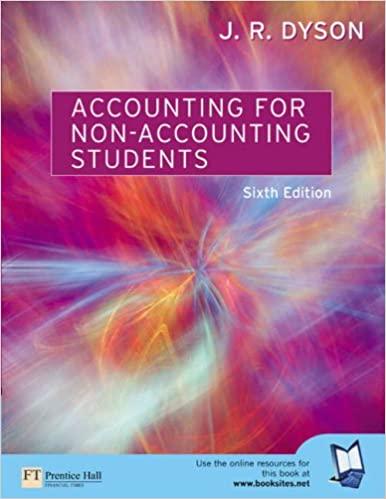Brambles Industries is a public limited company (plc). It was created in 2001 by the merger of
Question:
Brambles Industries is a public limited company (plc). It was created in 2001 by the merger of Brambles Industries Limited in Australia with part of its joint-venture partner, GKN plc in the UK. Clare Cheng had read something about the formation of the company in the newspapers and she thought that it might be suitable for her as a longterm investment. She obtained a copy of the Annual Review for the Year 2002. It was not an easy read.
The first page gave some details about the company. It appeared to be a ‘global support services provider’ but Clare was not sure what that meant. Turning over the pages she came across a section called ‘Business Reviews’. It appeared that Brambles was a combination of a number of other companies. CHEP supplied pallet and plastic containers, Cleanaway was involved in waste management, while Recall was an information management company. Other companies appeared to be offering services to the coal and steel industries but Clare was not clear what they did.
She continued to flick through the pages. It was all very puzzling. On page 59 she got to that part of the Review dealing with the financial statements. The financial statements went on for the next 42 pages. It was all very daunting. The pages from page 42 to 64 were full of figures that frightened Clare. Page 65, however, was headed ‘Notes To The Combined Financial Information’ and these continued until page 95.
Clare tried to read these notes but they appeared to require both a knowledge of Brambles’ various activities and a considerable knowledge of accounting. In desperation Clare had a word with her friend Kate Feng. Kate had recently qualified as a chartered accountant.
Kate was in her element. She took Clare through the Combined Financial Statements.
Kate made two points: (1) the preparation of accounting statements required a great deal of individual judgement; and (2) the format and content of Brambles accounts was no different from most other companies. Clare was reassured about the second point but concerned about accounts requiring individual judgement.
‘OK,’ said Kate. ‘Let’s look at the accounting policies on pages 66 and 67. Apart from a few things that are specific to Brambles, they are pretty standard.’
Clare was beginning to feel a little less concerned.
Kate continued, ‘If we go through a few of the policies, I can explain why some individual judgement is required and what impact that may have on the company’s profit.’
‘You mean that the profit can be fiddled?’ queried Clare.
‘Not in the fraud sense,’ replied Kate, ‘but yes. Depending upon what accounting policies are adopted and what assumptions are made, it is possible to arrive at almost any figure for profit that you want.’
Kate may have been overstating the point and Clare’s face once more began to register her alarm. She was not sure any more that she wanted to buy some shares in Brambles or indeed in any other company.
Nevertheless, Kate began to explain the company’s accounting policies while Clare listened very carefully.
Note: Brambles’ accounting policies relating to debtors, provisions, stock, and tangible fixed assets and depreciation are shown in the Appendix below.
Required:
1 Explain what each of the accounting policies means.
2 Demonstrate how the application of each of these policies can affect the level of accounting profit (or loss) for a particular period.
Step by Step Answer:






